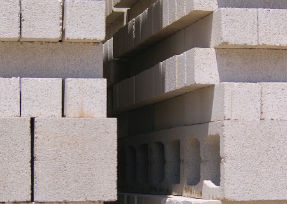What is Autoclaved Aerated Concrete?
Autoclaved Aerated Concrete (AAC) is a precast building material made from natural raw materials. It is also known as Autoclaved Cellular Concrete (ACC). This solid concrete block is economical, energy-efficient and environment friendly. It is fire and termite resistant. In addition, it also provides sound and thermal insulation.
How is AAC manufactured?
A combination of silica sand or recycled fly ash, lime, water and aluminum paste or powder is mixed with Portland cement. This mixture is poured into a mold. The aluminum and the concrete give rise to microscopic hydrogen bubbles. These bubbles help in expanding the concrete to around five times its original size. After the hydrogen evaporates the aerated concrete is cut into the desired size and steamed in a pressurized chamber known as an autoclave.
When was AAC discovered?
AAC was discovered by the Swedes in 1914 when they mixed cement, sand, lime and water with aluminum powder which led the mixture to expand. This was later developed further to form the AAC that is used today. It has been a popular building material for over 50 years in Europe.
What are the attributes of AAC?
AAC is an airtight concrete block that is non-toxic and non-organic. During the manufacturing process it does not produce any harmful byproducts or pollutants. AAC is shaped into blocks or panels which are available in various shapes and sizes. AAC is known to outperform conventional blocks of concrete or poured concrete. It is also known to store and release thermal energy. Being versatile and easy to work with, AAC lends itself to elaborate designs of sculptors and architects just as easily as it would for conventional building techniques.
What are the benefits of AAC?
- It is more energy efficient than conventional concrete.
- It can be easily recycled.
- It can naturally resist fire, fungal decay and termites.
- It can be easily cut by conventional tools.
- Due to its thermal resistance it has lower energy costs.
- Due to its lightweight nature it helps in reducing shipping and handling costs.
- The blocks can be easily painted, plastered or finished.
- Manufacturing AAC uses a fraction of the energy required to make other building materials.
...Read more
Close










